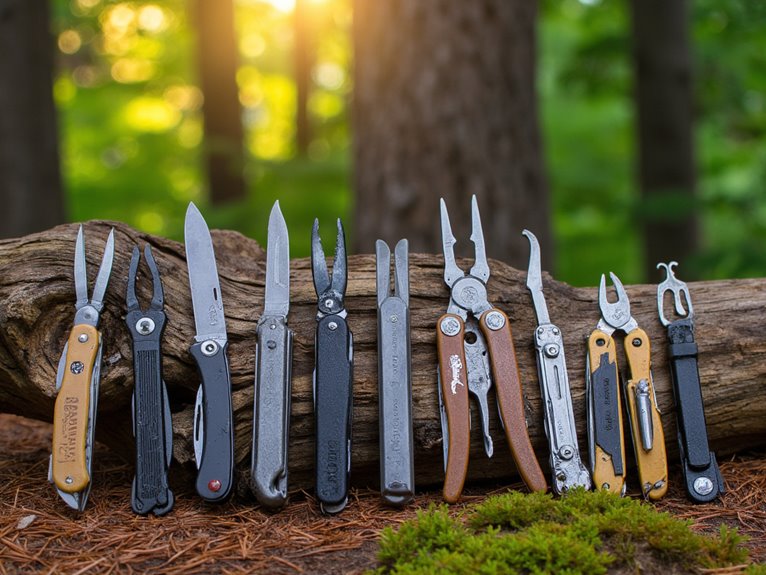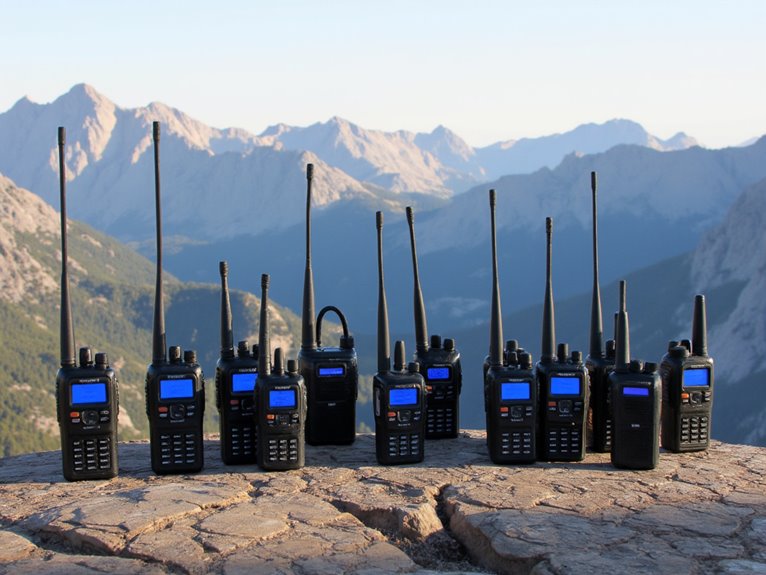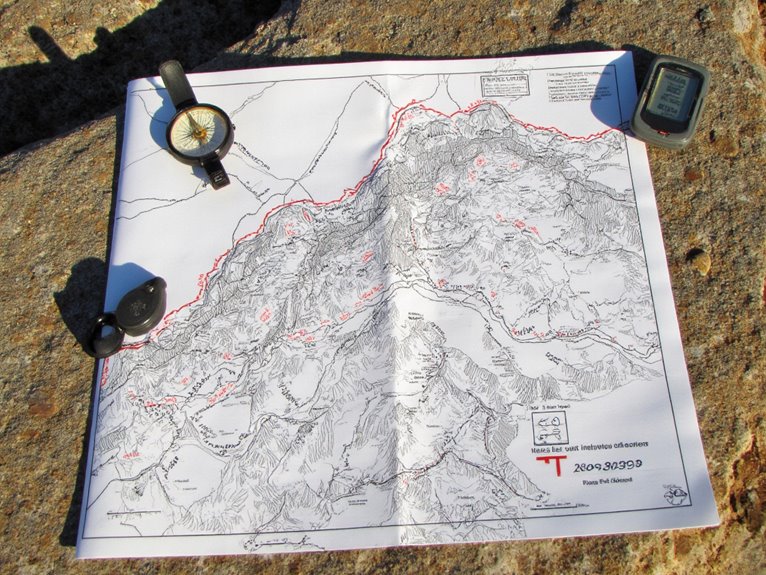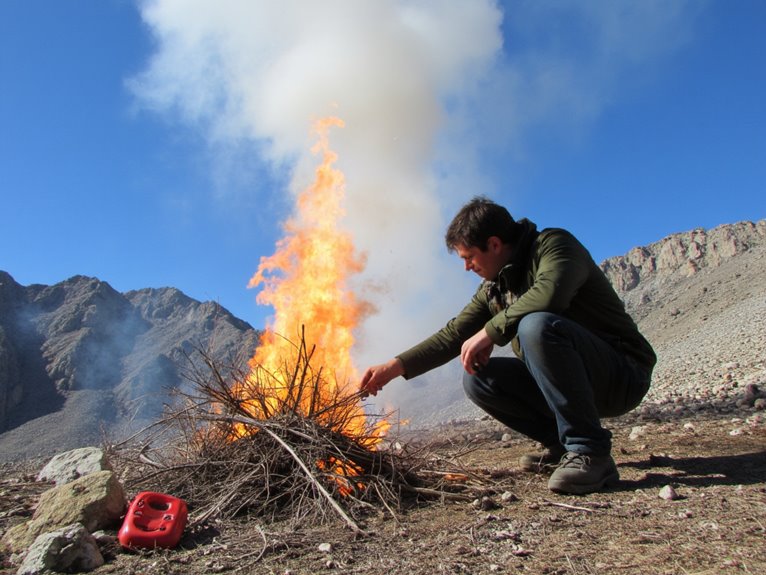How to Be an Ultralight Backpacker?
To become an ultralight backpacker, start by evaluating your current pack weight and identify areas for improvement. Choose a lightweight backpack and gear, focusing on simplicity and functionality. Pack strategically, using multi-use items and rolling clothes to save space. Master the art of layering for ideal comfort and temperature regulation. Finally, fine-tune your system by optimizing gear selection, streamlining daily routines, and simplifying tasks. By adopting these principles, you'll be well on your way to hiking lighter and freer. And the best part? There's still much to discover on this trail to ultralight enlightenment.
We are supported by our audience. When you purchase through links on our site, we may earn an affiliate commission, at no extra cost for you. Learn more. Last update on 17th January 2026 / Images from Amazon Product Advertising API.
Assessing Your Current Pack Weight
Before you can begin shedding pounds from your backpack, you need to know precisely how many pounds you're carrying in the first place, so grab your trusty scale and weigh that behemoth of a pack you've been lugging around.
Be honest, you're curious – and a little scared – to see the number. Take a deep breath and face the music. Write down the weight and take a good hard look at it.
This is your baseline, your starting point for the ultralight journey.
Now, take a step back and assess the contents of your pack. What's essential, and what's just extra baggage (literally)? It's time to get ruthless and start cutting the fat – or should we say, the ounces.
Choosing the Right Backpack
With a baseline weight in hand, it's time to weigh the foundation of your ultralight setup: a backpack that's equally as lean and mean as you aspire to be.
Your pack is the unsung hero of your ultralight journey, carrying the load (literally) of your gear.
Look for a pack that's designed specifically for ultralight backpacking, with a focus on durability, comfort, and – you guessed it – minimal weight.
Consider a pack with a capacity of 30-40 liters, made from lightweight yet rugged materials like nylon or Dyneema.
Don't be afraid to try before you buy; a well-fitting pack is essential for comfort and performance.
Ultimately, the right backpack will be your trusted sidekick on the trail, allowing you to hike farther, faster, and with a whole lot more swagger.
Selecting Ultralight Gear Options
In the realm of selecting ultralight gear options, the name of the game is simplicity and scrutiny.
Every ounce counts, and it's time to get ruthless about what makes the cut and what gets left behind.
Shedding Unwanted Ounces
Ultralight enthusiasts know that the key to a blissfully burden-free backpack lies in carefully curating a kit that's stripped of excess, yet still packed with performance.
So, where do you start? Begin by scrutinizing your gear list and asking the tough questions: Do I really need that camp chair? Can I survive without a dedicated pillow? Be ruthless – every ounce counts.
Consider swapping bulky items for their ultralight counterparts, like switching from a heavy tent to a tarp and bug net combo. By shedding those unwanted ounces, you'll be rewarded with a pack that's lighter, more efficient, and ready to take on the trails.
Lightweight Alternatives Exist
Three key areas to focus on when selecting ultralight gear options are shelter, sleeping systems, and backpacks, as these account for the bulk of a typical pack's weight.
By opting for lightweight alternatives in these areas, you can substantially slash your overall pack weight.
For instance, consider a tarp or a hammock instead of a traditional tent, which can save you up to 2 pounds.
In the same vein, trade in your bulky sleeping bag for a lightweight quilt or a down-filled bag.
And, ditch that heavy backpack for a sleek, ultralight model.
Gear Weight Optimization
Optimizing gear weight is a delicate balancing act between cutting ounces and compromising on comfort, safety, and durability.
It's essential to strike a balance between shedding pounds and retaining the functionality you need.
The 80/20 rule applies: 80% of the time, you likely use 20% of your gear.
Identify these essential items and focus on optimizing them first.
Look for lightweight alternatives that still meet your needs.
For example, swap your bulky sleeping bag for a lightweight quilt, or trade your heavy tent for a tarp and bug net combo.
Packing Strategically for Success
By packing strategically, you can shed pounds from your backpack and hours from your itinerary, freeing you to hike farther, faster, and with a lot more smiles.
Packing strategically means being intentional about what you bring and how you organize it. It's about creating a system that works for you, not against you.
- Pack multi-use items: Instead of bringing a separate towel, clothesline, and scrubber, opt for a multi-use item like a sarong that can serve all these purposes.
- Roll with it: Rolling your clothes instead of folding them can help reduce wrinkles and save valuable space in your pack.
- Keep it accessible: Store frequently used items like snacks, maps, and sunscreen in easy-to-reach pockets, so you can grab them on the go.
Mastering the Art of Layering
A well-crafted layering system is the key to staying comfortable, dry, and happy on the trail, and it all starts with a deep understanding of the principles that govern how our bodies interact with the elements.
Our bodies are like imperfect thermoses – we lose heat, sweat, and dry out. To combat this, we need a system that breathes, wicks, and adapts. Think of it as a thermostat for your torso.
Start with a moisture-wicking base layer, followed by a breathable mid-layer for insulation, and top it off with a waterproof and wind-resistant outer layer. This harmonious trifecta will keep you cozy in the cold and cool in the heat.
Fine-Tuning Your Ultralight System
Now that you've mastered the art of layering, it's time to scrutinize every aspect of your backpacking system to shave off those last few ounces.
This means meticulously weighing every item, optimizing your gear selection, and streamlining your daily routines to create a lean, mean, ultralight machine.
Weighing Every Single Item
Precision is the unsung hero of ultralight backpacking, where a meticulous weighing of every single item can mean the difference between a comfortable journey and a grueling haul.
It's astonishing how quickly ounces add up to pounds, and pounds to fatigue. So, get out your trusty scale and weigh every. single. item.
- That 'just-in-case' extra shirt: 6 oz
- The 'multi-tool' with 17 functions: 8 oz
- The 'ultralight' tent that's not so ultralight: 3 lbs 12 oz
Optimizing Gear Selection
Every ultralight backpacker's gear list is a delicate balance of necessities and niceties, where each item's utility is carefully weighed against its weight in ounces.
The goal is to strike a balance between comfort and convenience, without sacrificing too much weight.
To optimize your gear selection, prioritize multi-use items that can serve multiple purposes, such as a sarong that doubles as a blanket and towel.
Ditch the 'just-in-case' items that rarely see the light of day.
Consider alternative materials, like titanium or silicone, which often provide the same functionality at a fraction of the weight.
Streamlining Daily Routines
By scrutinizing and streamlining daily routines, ultralight backpackers can uncover opportunities to shave precious minutes and ounces from their daily grind, freeing up energy for more enjoyable pursuits.
To fine-tune your ultralight system, reassess your daily routines and eliminate unnecessary tasks. Ask yourself: 'What can I simplify or eliminate to make my day more efficient?'
Simplify breakfast: Opt for a quick and lightweight breakfast, like instant coffee and energy bars, instead of cooking a hearty meal.
Streamline personal hygiene: Use baby wipes and hand sanitizer instead of carrying a bulky water filter and soap.
Combine tasks: Combine tasks like washing dishes and brushing teeth at a water source to save time and energy.





